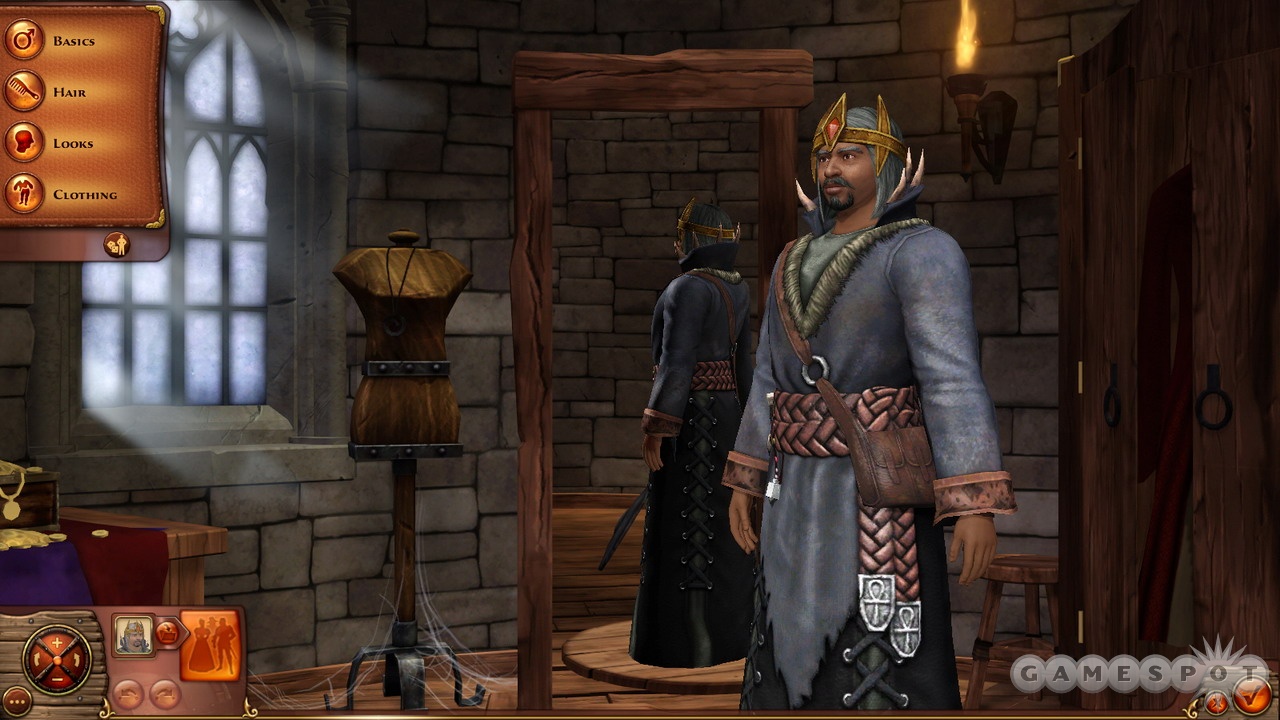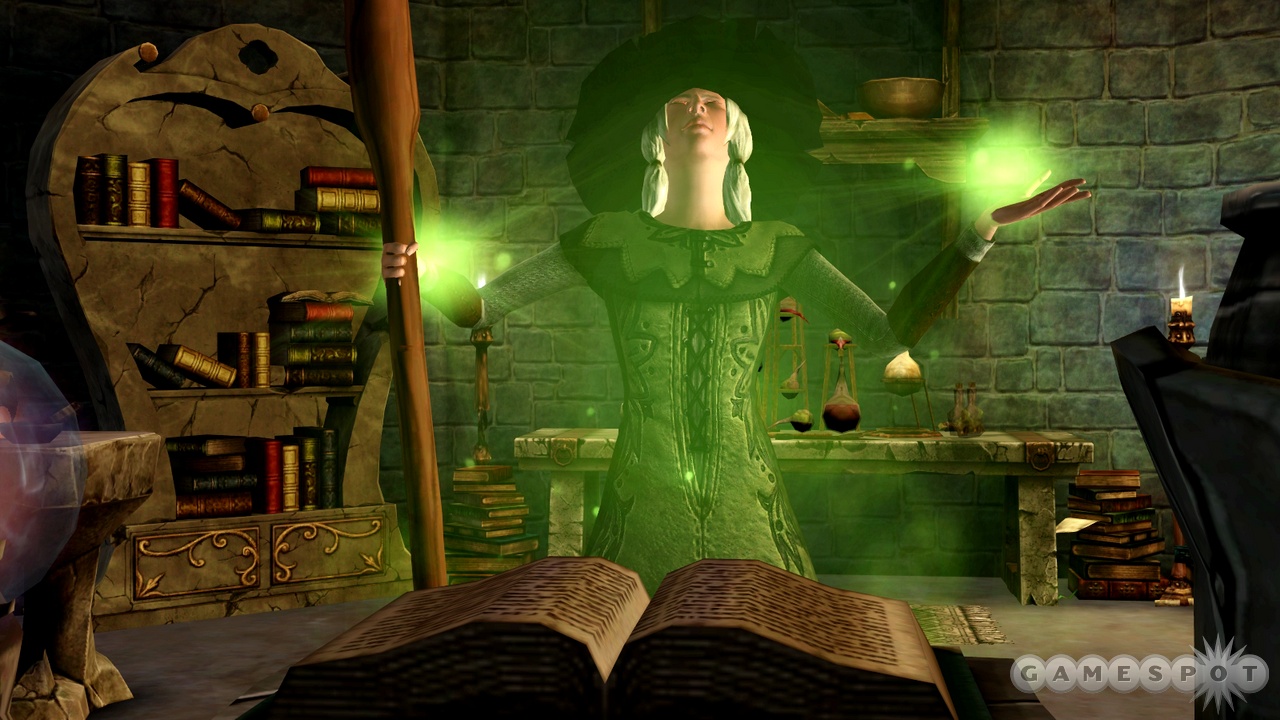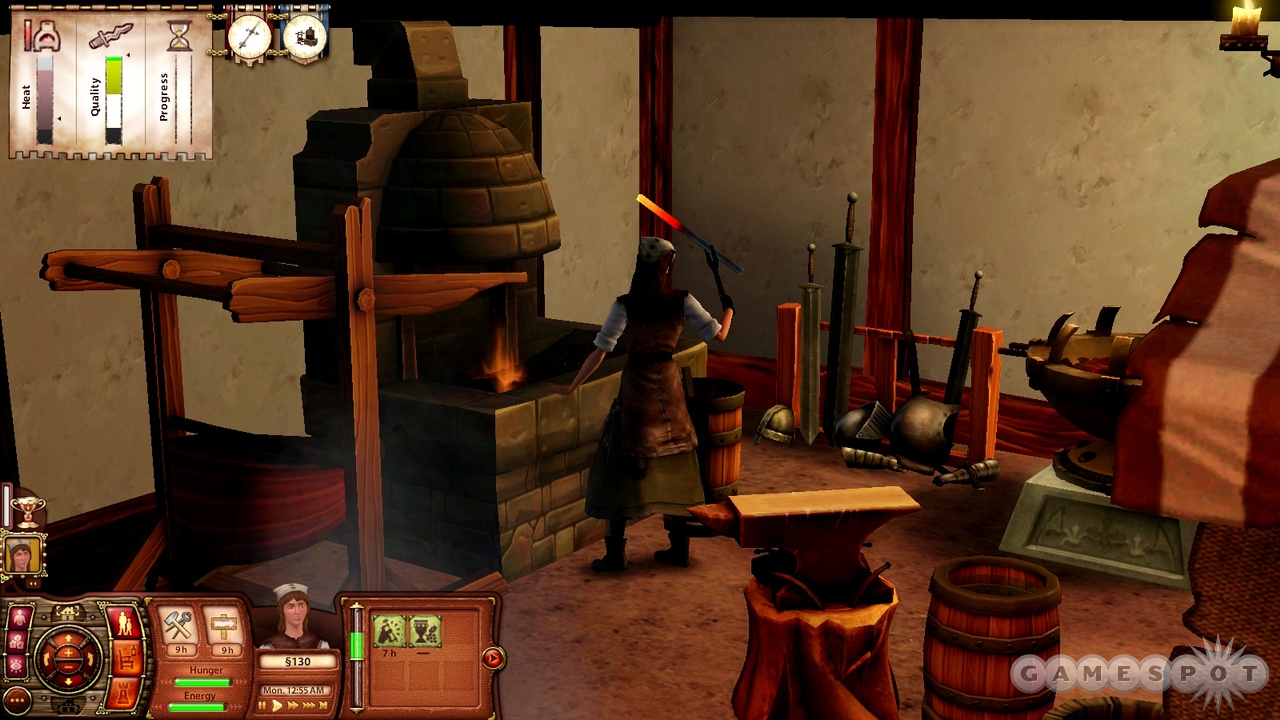The Sims Medieval Exclusive Hands-On - Building a Kingdom, Plus More Gameplay Details
We briefly get our hands on the newest game in the Sims series, which will let you become a mighty wizard or a crafty blacksmith.
What is The Sims Medieval? It's the next game in The Sims series. That is to say…it's not quite an expansion pack, and it's not quite The Sims 4, but man…! So to answer your question, we don't know. In any case, we recently played it alongside executive producer Rachel Bernstein and have new details to report on just how this unusual new entry in the series--which takes place in ancient times, puts you in the role of blacksmiths, kings, and other medieval professions, and has distinct victory conditions, after which the game ends--actually works.
Assassin's Creed Shadows Hands-On Preview DOOM: The Dark Ages | Gameplay Sizzle Trailer NINJA GAIDEN 2 Black Official Launch Trailer NINJA GAIDEN 4 Official Announce Trailer Assassin's Creed Shadows: Story Trailer Assassin's Creed Animus Hub - Explanatory Overview Trailer Black Ops 6 - Season 02 Cinematic Trailer Pokémon TCG Pocket: Space-Time Smackdown | Coming Soon! FINAL FANTASY VII REBIRTH - PC Launch Trailer over the hill - Announcement Trailer PAYDAY 3: Don't Be a Hero Trailer Vampires: Bloodlord Rising | Dragos Gameplay Trailer
Please enter your date of birth to view this video
By clicking 'enter', you agree to GameSpot's
Terms of Use and Privacy Policy
Our session began with hands-off demonstrations of some of the game's new content, which included a quick pass of your typical kingdom in Medieval. Unlike in The Sims, in which your focus is generally on a nuclear family living in a single house that you may or may not have built, in Medieval, you'll be an unseen deity presiding over an entire kingdom. You'll steer your domain toward one of a handful of different kingdom-based goals aligned with four different kingdom statistics: well-being (general health and economy), security (military strength), culture (provided by artists and minstrels), and knowledge (provided by the arcane research of wizards).
Your typical Medieval kingdom includes not only a monarch's castle (with stony add-ons on either side, such as knight's barracks), but also marketplaces (which can house a town square, a blacksmith, and other crafting services), docks (a home for seafaring ships, which can be used for commerce, diplomacy, and adventurous travel), the gallows (the home of the stocks, where unlawful sims are imprisoned, as well as the pit of the beast, where condemned sims are executed), and a leisure area. This is the home of the fictitious sport of kingball (which, Bernstein explained, is a totally fictitious sport--a version of tetherball, but more…peasant-y).
We then revisited the throne room to catch up with the monarch, who was busy with matters of diplomacy. Medieval's diplomacy model lets you make nice with your neighbors after you make that first diplomatic contact with them by traveling to their castles by boat. After you do so, their nations appear next to yours on the game's old-timey map along with information on your general relations level with them, as well as any trading resources they may have to offer and any ongoing edicts that are on the table.
Edicts in Medieval are cross-kingdom proclamations that affect trade and general law in each kingdom, and your monarch (and other monarchs) can propose them at any time from the scribe's table. Whether or not your nation's edicts get enough votes to pass depends on whether your propositions benefit other nations and whether other nations like yours enough to agree with you. As it turns out, it is possible to please all the people all of the time by forging strong alliances with all your neighbors--it just isn't easy. But if you care to, you can actually set the goal of having favorable relations with every single neighboring kingdom as your kingdom goal and work toward winning a game session that way. Or, you could try to build the biggest and best kingdom there ever was--accomplishing any of these goals earns you achievement points that carry over between games.
Build mode and buy mode from The Sims are both alive and well in Medieval, but they work differently. Buy mode, as we've mentioned, will not let you modify the geometry of a castle, but it will let you add and move any appropriate furnishings you like. It will also let you use a color wheel to tint and layer whichever colors you like onto whatever furnishings you like. You'll be able to choose from a number of different mural wallpapers to adorn your castle walls, and you can even choose from a variety of different light sources. These include torches, lanterns, and even glowing, wizardly orbs that not only cast ambient light, but can also be customized to cast light of a specific color (so you can create an appropriately gloomy purple throne room for a wicked despot). As a matter of fact, Medieval will have an entirely new lighting engine that extends to the exterior and models real-time shadows for clouds that pass over the landscape.

Building in Medieval turns the screen a washed-out sepia-tone brown color and highlights any empty lots in your demesne with a blue icon. Adding new structures is a matter of clicking on a preset empty lot and then dropping in whichever building you want--the structure materializes soon thereafter and can serve its purpose in your township. For instance, the knight's barracks we added to as a west wing to our castle not only made for a tasteful accompaniment, but it also immediately increased our kingdom's security rating by one point. We then built a wizard tower, which increased our kingdom's potential knowledge rating by up to four points. In all cases, once you build a building, you must assign a hero to staff that structure (such as a knight for the barracks or a wizard for a tower). At this point, you can either use the game's modified create-a-sim tool to make your very own custom hero from scratch or alternately, you can use a pre-generated hero character the game provides (but where's the fun in that?).
As we've mentioned in earlier previews, Medieval's create-a-sim is loaded with completely new art assets that represent the more austere time period. When creating our wizard, we were able to choose between a variety of brand new faces, along with clothing sets that included extravagant robes and the humbler rags of a hedge wizard (a padded suit with various pouches strapped to it). Our knight had the choice of various types of armor, including plate mail and chain mail, with or without heraldic designs. If you happen to create a combination of face, hair, and clothes you particularly like, you can save it to your computer as a template and then go back to it whenever you create a new character.
Perhaps more importantly, creating a new character lets you choose his or her personality, which includes two (potentially) positive traits and a fatal flaw trait. Our enchantress chose the eloquent and evil traits to get her started and the cruel fatal flaw, which would later inform her action. We then took our first, Elton John-inspired quest, "The Witch Is Back," a quest that introduced a witch into the kingdom's population. Like all of Medieval's quests, this one offered different approaches for a solution. In all cases, these multiple paths will involve different characters and different rewards in terms of your character's skill points (which increase his or her professional prowess, such as spellcasting for a wizard or dueling for a knight), experience points (which help him or her gain levels), and overall kingdom points. This particular quest had three possible solutions: "A Witch No More," an aggressive solution that would require us to slay the hag; "Delightful Wedding," which would require us to somehow get the witch to marry the monarch; or "Counterspellin'," which would require us to use a priest character to sap the witch's power.

Being the evil, cruel, but well-spoken sorceress we were, we chose the violent path and headed to the lab in our wizard tower to begin "scrying"--a magical process that would reveal the location of the witch. With the help of some cheat codes that the developer helpfully entered for us, we cheated our wizard up to the game's highest experience level of 10 (purely for demonstration purposes), just so we could guarantee a successful scrying session and also to unlock all the game's magic. Medieval's magic spells are tied to eight different runes, which you'll acquire over the course of a wizard or priest's career and relate to elemental powers, such as energy, air, and light. In order to cast a spell, you must call upon (that is, left-click) the spell's three runes in the correct three-rune sequence. The game will have several different spells (and a few undocumented rune combinations that will have hidden effects), but for our purposes, the appropriately deadly sounding magic arrow--which is currently invoked by selecting the rune for energy, then the rune for air, then the rune for light--was sufficient.
We then set out to go witch hunting, with our first stop being the king's throne room. Each of Medieval's quests has a separate task window that appears in the bottom-left corner of the screen and tells you exactly what you need to do next to progress. In this case, the first leg of our journey required us to warn the king of the witch's presence. We entered the king's antechamber and immediately found the monarch lounging near the throne. We immediately approached the lackadaisical leader and chose the "warn about witch" social. And despite our character's appropriately melodramatic hand-waving and hysterical "simlish" gibberish, the king refused to heed our warning, dismissing the idea of a witch in his kingdom as a baseless rumor. Discouraged, we checked our quest log, which changed to a new goal--alerting at least three other townspeople of the witch's presence. This was presumably so that the spreading news might eventually cause the citizenry to once again bring the issue before the king. After alerting two very lovely ladies-in-waiting in the throne room, we decided we'd run out of patience and instead did something more in character for an evil and cruel enchantress: We used magic arrow on the king, zapping the sovereign senseless, but fortunately, not killing him.
It was at this point that we got a rundown from the producer on how fatality works in Medieval. Yes, this will be a T-rated game, but yes, sims will die--and in a variety of ways. Lethal magic spells are just one way for lords and ladies to shuffle off this mortal coil. For instance, there are also sword duels to the death that can take place among knights and monarchs. While the typical duel is merely for sport and can be used to gain experience points and skill points in fighting, you can, in fact, send your foe to that great big castle keep in the sky. In addition, if you fall completely out of favor with the townsfolk, they may sentence you to be fed to the beast in the pit--a mostly hidden critter whose only visible feature is a giant tentacle or two that lunges up from its lair and drags in its victims to be devoured offscreen; not unlike another pit beast from a certain galaxy far, far away. However, Bernstein pointed out that characters can build a relationship with the pit beast by feeding it, so that they can actually escape death when the friendly beast refuses to devour them.

We then capped our demonstration session off with a quick hands-on demonstration of crafting, which will also play a significant role in Medieval. We played as a pre-generated blacksmith and embarked on a quest to find an apprentice. Though to begin with, the first few steps required us to remain at our smithy and build a few basic components. Smithing, like Medieval's other crafting skills, requires that your characters possess all the necessary items in their inventory (such as raw materials and tools), and it also requires you to use the proper environmental fixtures--in this case, a red-hot forge and an anvil for pounding out metal. In order to begin smithing, we had our smith--equipped with the proper tools and raw metals--first approach the forge and select the option to begin crafting, which pulled up a glowing, two-level meter onscreen. As our crafting metal got hotter and hotter, the heat level on our crafting meter got closer and closer to our target heat level--but also closer to the slightly higher "overheat" level (which, if reached, means that your project is ruined). We ended our heating session right at our ideal heat level and then canceled the action to heat the metal and sent our smith over to the anvil to begin hammering away. This process took a certain amount of time, but while our smith hammered away, the crafting meter gradually declined, indicating that the metal was cooling. And if it got too cold, the project would be lost. Fortunately, we'd heated our materials up sufficiently to finish our crafting project on time and were soon the proud owner of a pair of apprentice's tongs.
The Sims Medieval is clearly forging a new path for The Sims with a lot more storytelling and a lot more role-playing elements. This unique game will be released in March of next year.
Got a news tip or want to contact us directly? Email news@gamespot.com
Join the conversation